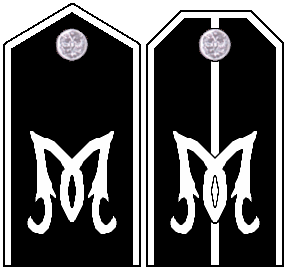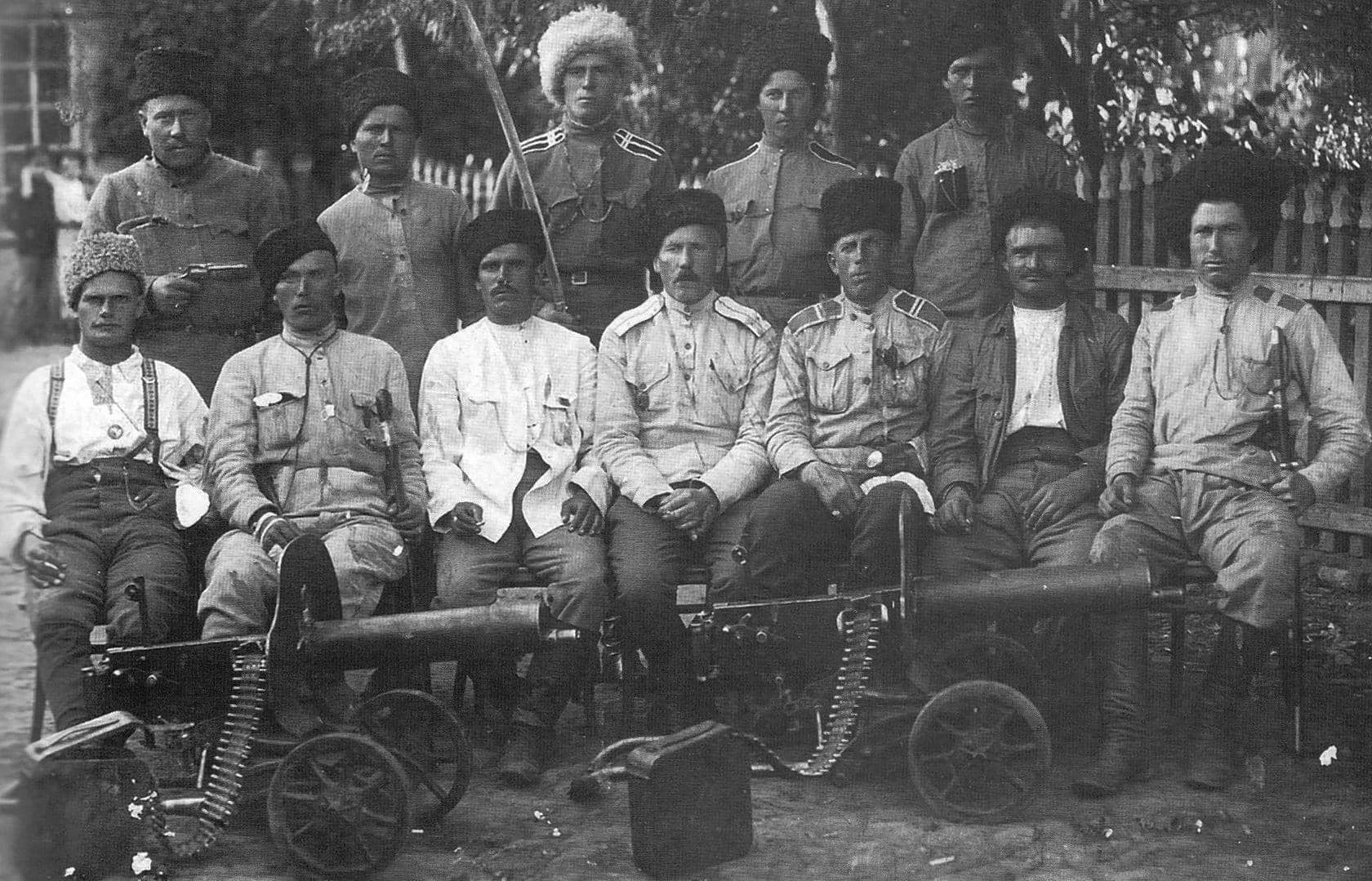
Markov Horse
A small unit recruited from Kuban Cossacks, and dressed in their particular style, but which did not fight as part of the Kuban Host. Instead it was the integral cavalry of the Officer General Markov Regiment (later Brigade, then Division).
It is extremely difficult to find information on this unit, so the following should be treated with caution. However if you want the integral cavalry of the Markov Division, then this is what you should have.
Horse Divizion of the Officer General Markov Division
The basic uniform was a standard Kuban outfit.
Uniform Details
 |
 |
|
| Shoulder-boards: Trooper and Esau (Captain) | Hats: men and officers |
The papakha was, ideally, black with a black top and white cords for officers, which is the reverse of the infantry version. Other colour papakhas were apparently worn, and specifically white with a white top and black cords.
The shoulder-boards were presumably black with white trim, and a white stylised "M", in line with the other units of the division.

Members of the Regiment, 1918
History in the RCW
The unit operated throughout its history as an adjunct to the famous infantry of the same name.
It started in May 1918 as a sotnia (squadron) separated out of the Independent Horse Brigade of Kuban Cossacks, and was initially titled the Independent Horse Sotnia of the 1st Infantry Brigade. In August 1918 it numbered some 100 sabres and one horse gun.
The Officer Regiment of this brigade gradually became increasingly associated with General Markov, who had died commanding them. In mid-1919 this became official, and the "General Markov" title was added to both the infantry and attached cavalry. About this time the cavalry unit became a divizion, presumably of two sotnias.
In October 1919 they numbered 150 sabres and in December, 200 men reforming, plus 50 to 60 in the operational sotnia. In February 1920 it had about 200 sabres.
The unit was reformed in the Crimea along with the rest of the division, incorporating many men from the Black Sea Horse, in mid-1920, and took part in the fighting in Northern Taurida . In October 1920 it had 175 sabres.
Flags
No idea. This looks the part:

Sources
Markov and the Markovtsy, a book of articles about the Markovtsy published by Posev.